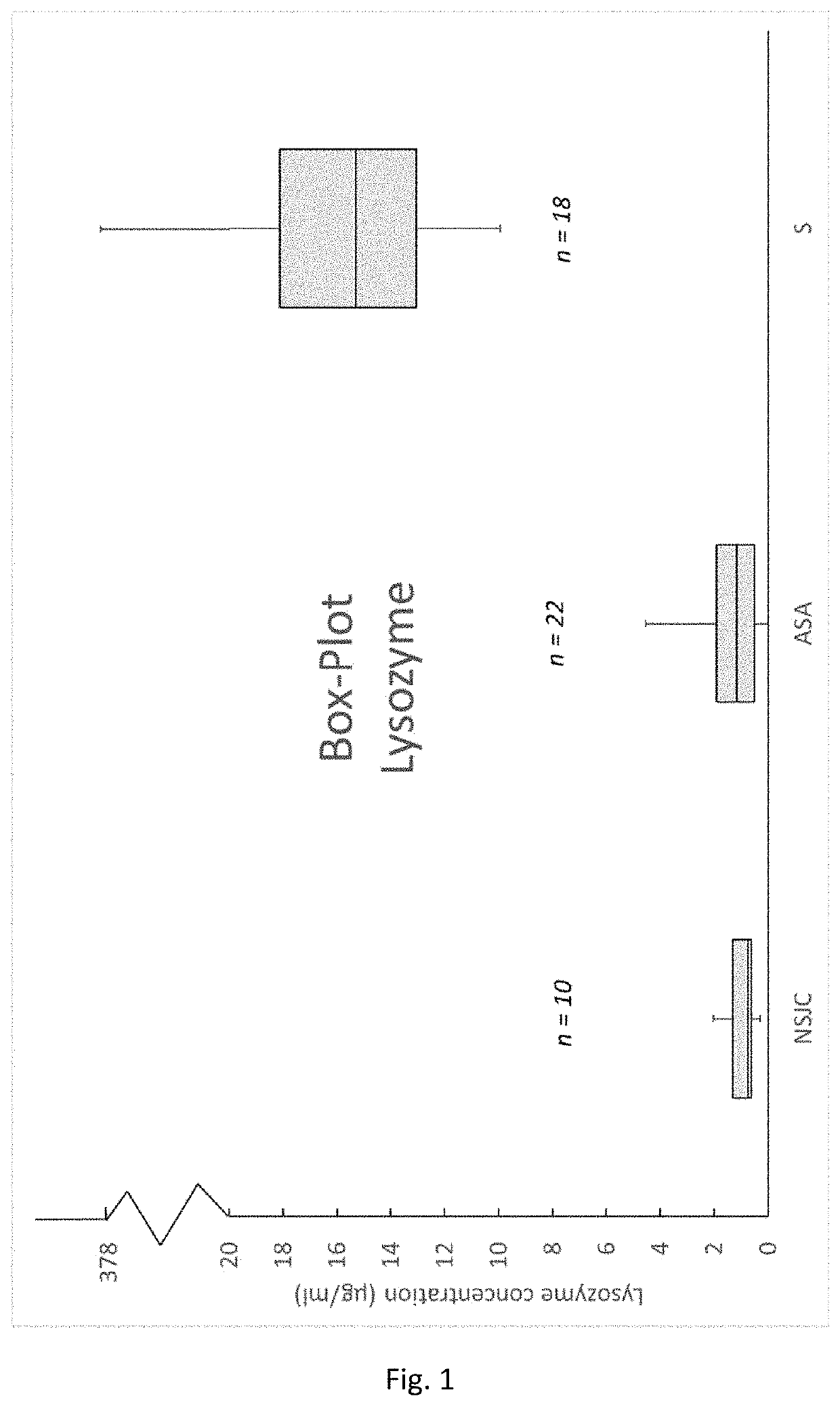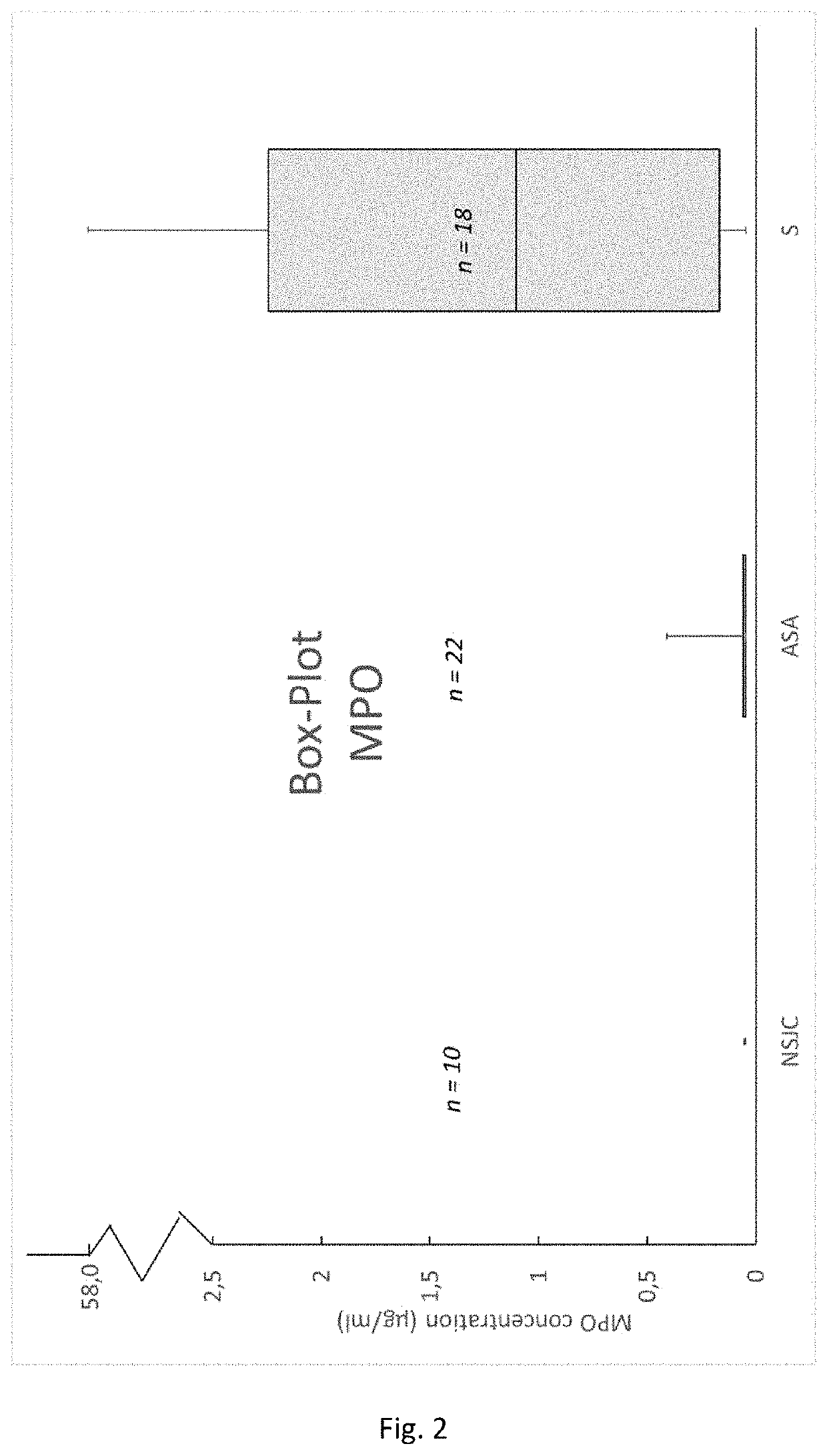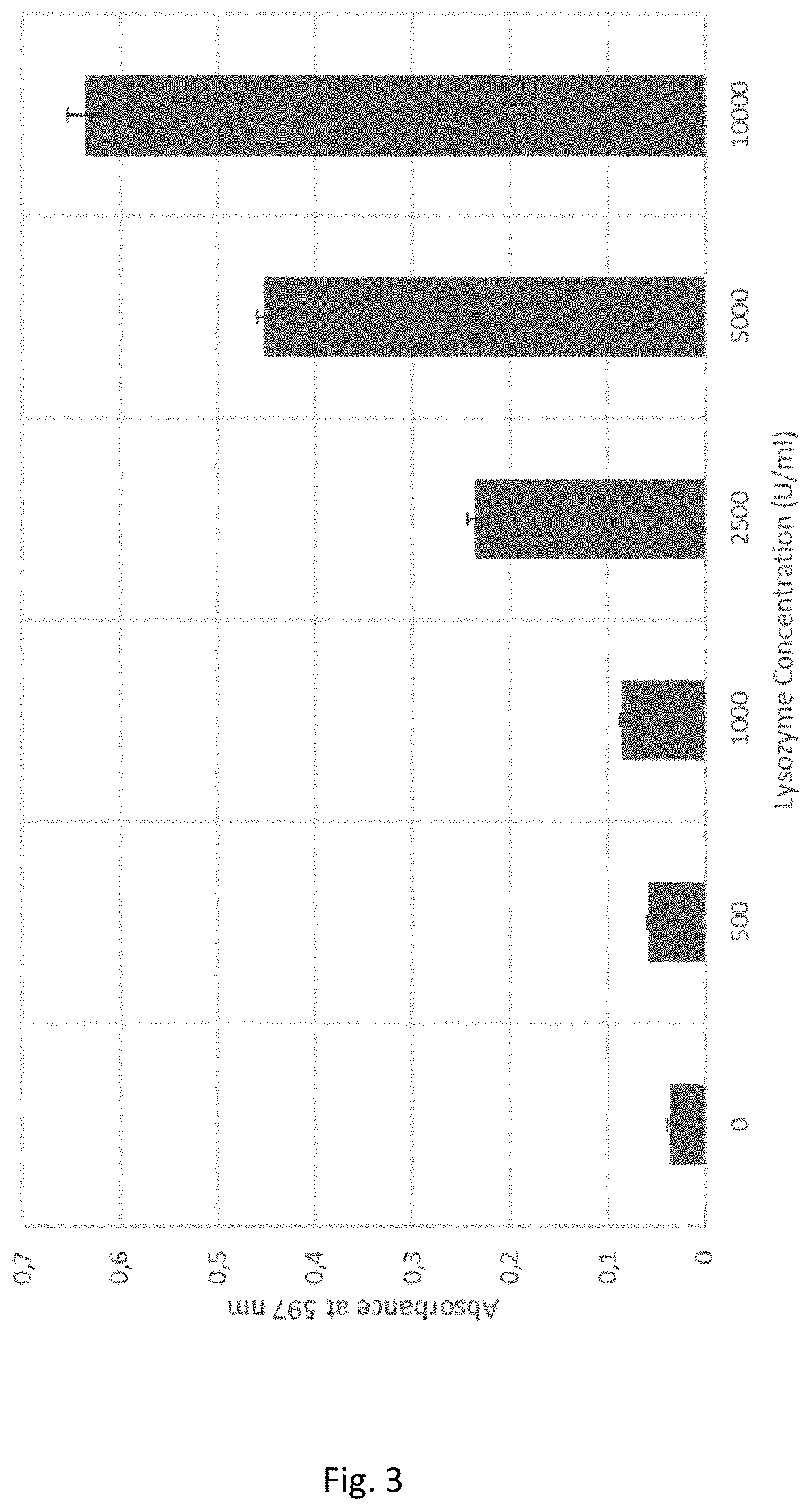Method for detecting synovial joint infections
- Summary
- Abstract
- Description
- Claims
- Application Information
AI Technical Summary
Benefits of technology
Problems solved by technology
Method used
Image
Examples
example 1
tion of Lysozyme Activity in Synovial Fluid Samples Obtained From Healthy Patients and Patients Suffering From Rheumatoid Arthritis and Microbial Infections of a Synovial Joint
[0075]Lysozyme is an enzyme, which is produced and secreted by cells of the innate immune system. Peptidoglycan is the main building block of cell walls from gram positive bacteria and can be cleaved by lysozyme. This is a natural defence mechanism from the immune system to cope with bacteria by digesting their cell walls. It was demonstrated, that in 100% (see Table 1, Sensitivity) of the tested synovia samples which were diagnosed as septic by the responsible clinicians, the lysozyme activity was elevated. Moreover, 100% (see Table 1, Specificity) of the samples which were classified as negative or inflammatory did not show elevate lysozyme levels.
[0076]The activities of lysozyme were measured as follows:
[0077]290 μl of a 0.45 mg / ml peptidoglycan solution (from Micrococcus luteus) in a sodium phosphate buffe...
example 2
Measurement of Lysozyme With Dyed Peptidoglycan
[0078]7.5 mg peptidoglycan-reactive black 5 were suspended in 0.990 ml 0.9% NaCl solution. 10 μl of different lysozyme concentrations were added to the reaction solution to final concentrations ranging from 0 U / ml-10000 U / ml (every concentration in triplicates). All samples were incubated at 37° C. for 60 minutes and shaking at 1400 rpm. After the incubation step all samples were centrifuged at 10000 g for 5 minutes. 100 μl of each supernatant were transferred into a 96 well plate and absorbances were measured at 597 nm. Absorbance values are shown in FIG. 3. All lysozyme concentrations could be clearly distinguished.
example 3
se Over 60 Minutes for 10000 U / ml Lysozyme
[0079]7.5 mg / ml peptidoglycan-reactive black 5 were suspended in 0.990 ml 0.9% NaCl solution. 10 μl of a lysozyme solution were added to a final concentration of 10000 U / ml. All samples were incubated at 37° C. for 10-60 minutes and 1400 rpm. Every 10 minutes triplicates were centrifuged (10000 g, 5 min) and 100 μl of the supernatants were transferred into a 96 well plate. The absorbance was measured at 597 nm. The time-depending dye release is shown in FIG. 4. Already after 10 minutes the
PUM
 Login to View More
Login to View More Abstract
Description
Claims
Application Information
 Login to View More
Login to View More - R&D
- Intellectual Property
- Life Sciences
- Materials
- Tech Scout
- Unparalleled Data Quality
- Higher Quality Content
- 60% Fewer Hallucinations
Browse by: Latest US Patents, China's latest patents, Technical Efficacy Thesaurus, Application Domain, Technology Topic, Popular Technical Reports.
© 2025 PatSnap. All rights reserved.Legal|Privacy policy|Modern Slavery Act Transparency Statement|Sitemap|About US| Contact US: help@patsnap.com



